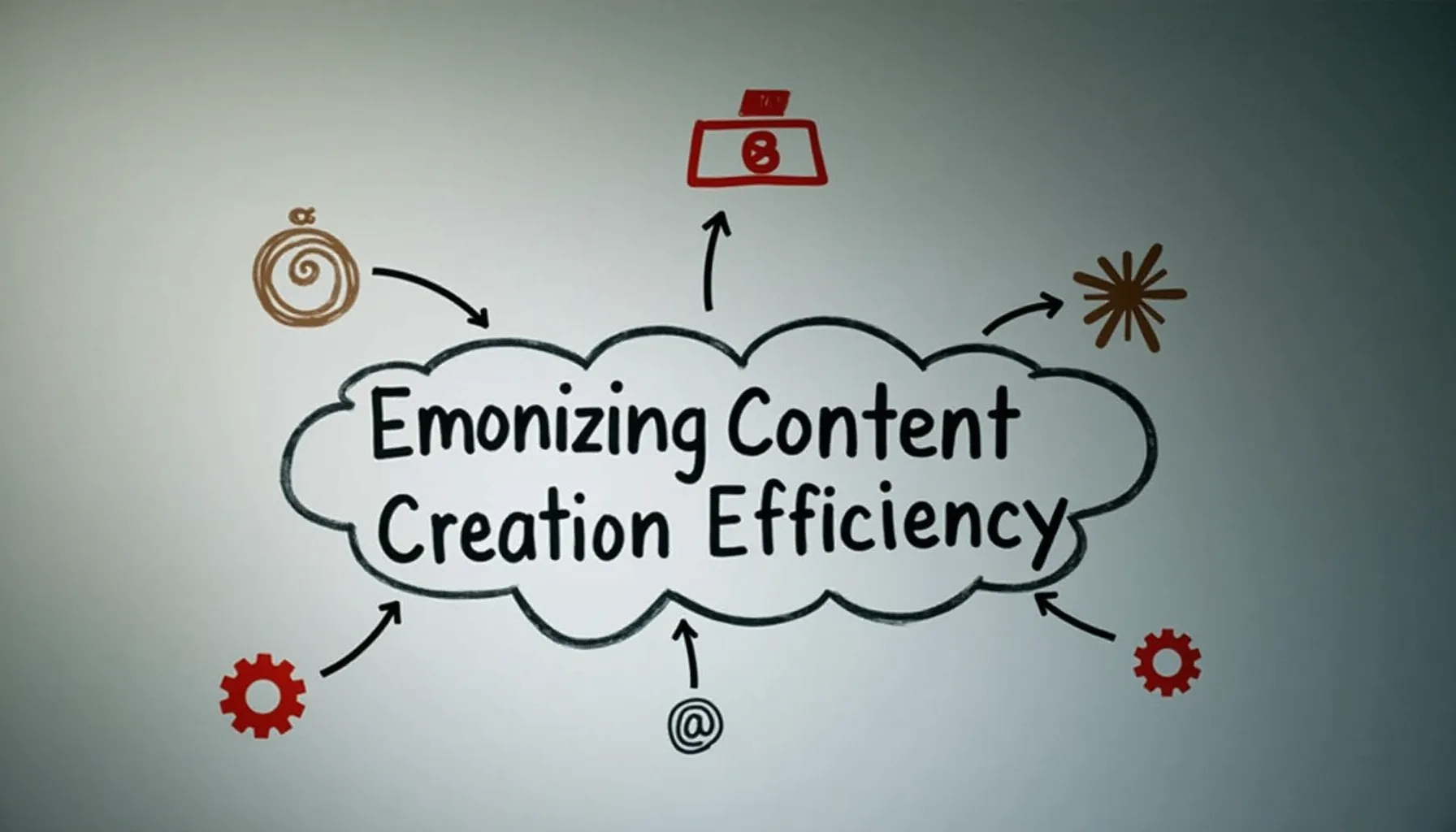Maximize Content Output: Effective Strategies for Success
-
Feb. 25, 2025
-
David Data

In today's fast-paced digital world, learning how to maximize content output is essential for anyone looking to stay ahead. Imagine being a small business owner, overwhelmed by the need to constantly produce engaging content while managing day-to-day operations. You’re not alone in feeling this pressure. Many of us grapple with the challenge of keeping up with the relentless demand for high-quality content that resonates with our audience while still maintaining our voice and creativity. But what if there was a way to simplify this process?
This article will explore practical strategies to help you streamline your content creation efforts, focus your energy, and ultimately enhance your productivity. From understanding the importance of a solid content strategy to leveraging automation tools, we’ll dive deep into techniques that can transform your approach to content production. Whether you’re a seasoned marketer or just starting on your content journey, there’s something here for everyone to elevate their output without sacrificing quality.
Key Takeaways
- Understanding the Foundation of Content Output
- Planning with an Editorial Calendar
- Embracing Batch Content Production
- Content Repurposing: Maximizing Your Existing Assets
- Leveraging Technology to Enhance Efficiency

The Significance of a Solid Content Strategy
Your journey toward maximizing content output begins with a solid foundation: a well-defined content strategy. Think of this as your blueprint for success. Without it, your efforts in content creation can feel scattered and ineffective, much like trying to navigate a maze without a map.
A content strategy not only clarifies your goals but also aligns your content creation with your business objectives. It helps you understand what your audience wants and how to serve them best. Questions like, "What topics resonate with my audience?" and "What type of content drives engagement?" become guiding principles.
By identifying your target audience and their preferences, you'll create content that speaks directly to them, making it more likely to be shared and engaged with.
Key Components of a Successful Content Strategy
- Target Audience Definition: Knowing who you're talking to is crucial. Conduct surveys or leverage analytics to gather valuable insights about your audience's interests and needs.
- Content Goals: These can vary, from increasing brand awareness to generating leads or driving conversions. Define what success looks like for you.
- Content Types and Formats: Diversify your content portfolio. Consider blogs, videos, podcasts, and infographics to cater to different preferences.
Aligning Content with Business Objectives
When your content is in sync with your overall business goals, it creates a ripple effect across your brand's performance. For example, if your goal is to generate more leads, your content should include clear calls to action and focus on addressing customer pain points. With a strategy in place, you'll find it easier to track progress and make adjustments along the way, ultimately leading to a more organized and focused content production process.
Creating an Effective Editorial Calendar
Once your content strategy is established, the next pivotal step is crafting an effective editorial calendar. This tool acts like a roadmap for your content efforts, helping you plot out what, when, and where you’ll publish. Picture this: instead of scrambling for content ideas at the last minute, you have a clear plan laid out for weeks or even months ahead.
An editorial calendar helps streamline your content creation process. It reduces confusion, ensures timely publishing, and fosters a consistent voice across all platforms. By mapping out content in advance, you can better allocate resources, identify themes for specific time periods, and integrate seasonal topics that resonate with your audience.
Tools for an Editorial Calendar
While the tools you use can vary based on preference, platforms like Trello, Asana, and Google Sheets are popular choices for creating and managing your calendar. These tools allow for easy collaboration with your team, ensuring everyone is on the same page.
Key Elements to Include in Your Calendar
- Content Topics: Brainstorm and list potential topics that align with your strategy.
- Publication Dates: Schedule when each piece will go live, keeping in mind your audience's habits.
- Assigned Authors: Clearly designate who is responsible for creating content, promoting accountability.
- Expected Outcomes: Add metrics for success to measure engagement, traffic, or conversions.
Statistics suggest that teams utilizing an editorial calendar can see a productivity boost of up to 60%. With such impact, isn't it worth the effort to start mapping out your content?
Techniques for Batch Content Production
Batch content production is an innovative way to turbocharge your efficiency. Instead of jumping from task to task, batching enables you to group similar tasks together, helping you maintain focus and save precious time. For instance, you could set aside a day dedicated solely to writing blog posts or creating social media graphics.
This method allows you to enter a creative flow, where ideas come more freely and the work feels more seamless. Think about it: when you're fully immersed in writing, it’s easier to replicate that creative energy across multiple pieces of content.
How to Implement Batch Production in Your Workflow
To effectively implement batching, start by organizing your tasks into specific categories—like writing, editing, or social media management. By dedicating distinct days to certain functions, you not only boost productivity but also enhance the quality of your work. Set realistic goals for the number of pieces you want to complete during each session, and stick to them. You'll be amazed at how much you can achieve when you focus your efforts!
Benefits of Batching for Creatives
Embracing batch content production not only helps alleviate the pressure of deadlines but also allows you to think critically and strategically about your content approach. I can attest that batching has transformed how I work, providing a dedicated space for creativity while ensuring that I meet my objectives.
It’s a game-changer for anyone looking to maximize output without burning out.
The Power of Content Repurposing
Content repurposing is a savvy strategy that can dramatically extend the life of your existing assets. Instead of constantly creating new content, this technique allows you to breathe new life into what you've already produced. Imagine taking a well-received blog post and transforming it into a series of engaging social media posts or even a video.
It’s a smart way to maximize the investment you've already made.
Repurposing isn’t just about changing formats; it’s about reaching different audiences. For instance, some people prefer watching videos to reading articles. By adapting your content, you can cater to these preferences and increase your reach significantly, all without starting from scratch.
Strategies for Repurposing Content
- Transform Blog Posts into Videos: Use your blog content as a script for short, engaging videos that can be shared on platforms like YouTube or Instagram.
- Create Infographics: Summarize your key points in visual format for quick consumption and shareability.
- Develop Podcasts: Turn insightful blog articles into episodes, offering a different way for your audience to engage with the material.
Analyzing Past Content for Repurposing Opportunities
Not all content is created equal; some pieces resonate more strongly with your audience. Analyzing metrics to identify high-performing posts allows you to prioritize repurposing efforts. Utilize tools like Google Analytics to look for posts with high engagement rates. By focusing on these successful pieces, you can amplify their impact and ensure your efforts yield positive results.
Success Stories of Effective Repurposing
Look at industries like marketing and education, where repurposed content thrives. For example, a popular online course provider may take a well-received blog article and use it to create a comprehensive eBook, bringing in additional revenue while providing value to learners. These success stories reveal how repurposing not only saves time but can also lead to new revenue streams and improved brand visibility.
Leveraging Technology to Enhance Efficiency
In today's digital age, technology plays a critical role in enhancing the efficiency of your content creation process. Embracing automation can take your efforts to the next level, helping you streamline tasks that would typically consume hours of your day. Imagine drastically cutting back on repetitive work, allowing you to focus on what you do best—creating compelling content.
Automation tools can help with various aspects of content production, from scheduling and posting to tracking performance. By integrating these solutions into your workflow, you can ensure consistency and reduce the chance of errors, freeing you up to brainstorm fresh ideas and refined strategies.
Recommended Automation Tools
- Social Media Scheduling: Tools like Hootsuite and Buffer allow you to plan and schedule posts in advance, ensuring your content goes live when your audience is most active.
- Email Automation: Services like Mailchimp can help manage your email campaigns, sending personalized content to your subscribers even while you’re focusing on other priorities.
- Content Management Systems: Platforms like WordPress provide functionalities that streamline the publishing process, from drafting to SEO optimization.
Benefits of Using Automation for Content Scheduling
Implementing automation in your content workflow doesn’t just save time; it enhances your overall efficiency. You can maintain a consistent posting schedule, which is crucial for audience engagement. Additionally, with fewer manual tasks, the risk of inconsistencies or mistakes decreases dramatically.
You’ll find that the smooth operation of your content strategy is not just possible but probable when technology works for you.

Empowering Your Content Journey
Maximizing content output is not just a goal; it’s a necessary evolution in how we approach content creation. By implementing a solid content strategy, utilizing an editorial calendar, and adopting batching techniques, you pave the way for a more organized and productive workflow.
Each strategy discussed not only increases efficiency but also nurtures creativity, allowing you to connect more authentically with your audience.
Repurposing content reinforces this practice by extending the life of your existing material and addressing the diverse preferences of your audience. And let’s not overlook technology! Leveraging automation tools fosters consistency and frees up your time to focus on quality content instead of the mechanics of distribution.
As you implement these strategies, remember that optimizing your content approach is an ongoing process. So, embrace these techniques, experiment with them, and watch as your content output—and impact—grows. Now is the time to take action and elevate your content creation game to new heights!
FAQs About Maximizing Content Output
- What is the first step to maximizing content output?
The first step involves establishing a solid content strategy that aligns with your business goals and identifies your target audience. - How can an editorial calendar help with content production?
An editorial calendar streamlines your planning process by organizing topics, deadlines, and responsibilities, resulting in increased efficiency and consistency. - What are some effective techniques for batch content production?
Techniques include scheduling dedicated time for writing, grouping similar tasks, and setting clear goals for what you plan to accomplish within those sessions. - How does content repurposing enhance productivity?
Repurposing allows you to transform existing content into different formats, extending its reach while saving time on creating new material from scratch. - What role does technology play in maximizing content output?
Technology, particularly automation tools, helps to schedule posts, track performance, and manage tasks, enabling you to focus more on creating rather than managing.


